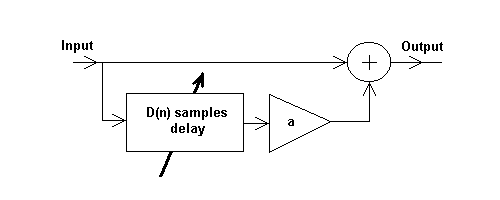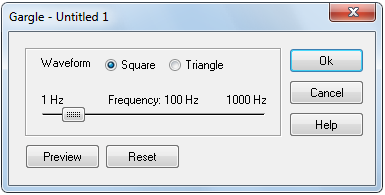|
Name |
Description |
|
Flanging is an audio effect produced by mixing two identical signals together, with one signal delayed by a small and gradually changing period, usually smaller than 20 milliseconds. This produces a swept comb filter effect: peaks and notches are produced in the resultant frequency spectrum, related to each other in a linear harmonic series. Varying the time delay causes these to sweep up and down the frequency spectrum  The scheme of FIR flanger The difference equation is y(n)=x(n)+ax(n-D(n)), where D(n)=d/2(1-cos(2pFn)), F - deviation speed (about 1 Hz), d - deviation rate. The modulation of... more | |
|
A phaser is a sound effect used to filter a signal by creating a series of peaks and troughs in the frequency spectrum. The position of the peaks and troughs is typically modulated so that they vary over time, creating a sweeping effect. For this purpose, phasers usually include a low-frequency oscillator. Structure The Phaser uses a series of variable all-pass phase-shift networks, which alter the phases of the different frequency components in the signal. These networks pass all frequencies at equal volume, introducing only phase change to the signal. Human ears are not very responsive to... more | |
|
A chorus effect occurs when individual sounds with roughly the same timbre and nearly (but never exactly) the same pitch converge and are perceived as one. While similar sounds coming from multiple sources can occur naturally (as in the case of a choir or string orchestra), it can also be simulated using an electronic effects unit or signal processing device.  Chorus Controls Waveform Sets the waveform shape Sine or Triangle of the LFO. Dry/Wet mix Sets the ratio of wet (processed) signal to dry (unprocessed) signal. Depth Sets the percentage by which the... more | |
|
The gargle effect modulates the amplitude of the signal.  Phaser Controls Waveshape: Sets the shape of the modulation waveform. Frequency: Sets the rate of modulation, in Hertz. |
|
Copyright (c) 2013 AudioDope team. All rights reserved.
|
|
What do you think about this topic? Send feedback!
|